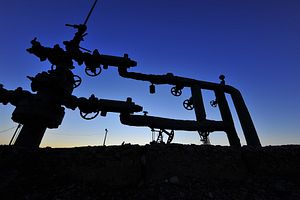For over a decade, the Kashagan oil field has been Kazakhstan’s white whale. The field – the largest discovered since the field under Alaska’s Prudhoe Bay in 1968 – long looked set to catapult Kazakhstan into the premier league of oil-exporting nations. Not only would the field, set to produce as much oil as Libya, attract that much more foreign largesse, but it would allow the government in Astana to further lubricate its hydrocarbon-heavy economy, forgoing necessary reforms for the foreseeable future.
But there’s a reason the field remains a white whale, rather than a necessary fallback for a government reeling from bottomed out hydrocarbon prices and too-weak-by-half responses. As 2015 comes to a close, Kashagan remains dormant, a sprawling exercise in hubris. The project is already 10 years overdue, with a price tag soaring past $50 billion – more than $30 billion over the initial projected costs. Even after the field came momentarily online in late 2013, the output ran only a few weeks before pipeline leaks forced an ad-hoc shutdown. Since that latest setback, costs have only accelerated, with, as Financial Times’ Jack Farchy reported, an additional $4 billion in pipeline replacement necessary.
Even as it sits inactive, Kashagan remains “the world’s most expensive oil development” and “has become a byword for the kind of cost overruns and delays that have plagued big developments across the oil and gas industry,” according to FT. The reasons for the indefinite delays run as lengthy as the postponement itself. From its iced-over location to the high-pressure reservoir, from the manufactured malfunctions to international miscommunications, the field has continued to draw Astana in, only to bludgeon the consortium with yet another unforeseen issue. As The Diplomat’s Paolo Sorbello noted, “Kashagan” can be translated as “unreachable” or “unattainable” – all too fitting in describing the debacle.
Still, the Kazakhstani government shows no signs of abandoning the project – the costs are already sunk and the pull of potential prestige remains. As such, it’s perhaps unsurprising that the country’s economy minister, Yerbolat Dosayev, said this week that he expects Kashagan to begin commercial oil production next December. But given the decade-long futility behind the field, there’s little reason to believe the government will meet that mark.
Even more worrisome for the government, however, is the fact that oil prices continue to scrape lower by the week. The price-drop has already battered Kazakhstan, as well as neighboring hydrocarbon exporters, but there is a special bit of fallout for Astana from the new lows. According to the International Energy Agency, Kashagan’s “capital cost per barrel of capacity is [already] as much as $80,000 – more than five times that of a conventional oil development in Saudi Arabia.” Moreover, Kashagan will only be economically viable if oil prices somehow soar back into triple-digits. “Analysts agree that Kashagan’s breakeven oil price, a level to cover costs and generate a fair profit, is well above $100 per barrel,” writes bne IntelliNews. “Investment bank Goldman Sachs estimates that Kashagan would need oil prices between $120 and $130 per barrel to be profitable.”
That is, for Kashagan to even avoid operating at a loss, Kazakhstan would need oil prices to somehow triple over the next year. And for Kashagan to avoid further pipeline leakage. And to avoid further management blunders. And to avoid any of the winter storms rocking the northern Caspian.
There’s a reason Kashagan has become Kazakhstan’s white whale: always in sight, but always just beyond reach. No matter how many years behind schedule, no matter how many tens of billions of dollars over-budget the project stands, the field continues tempting officials in Astana – all while producing little more than mounting frustration and drained coffers.

































